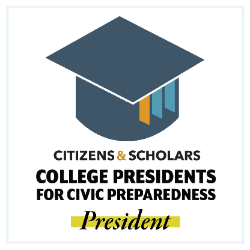

Past Presidents
- Home
- About Us
- Leadership
- President's Office
- Past Presidents
-
Patrick Finnegan
2010-12
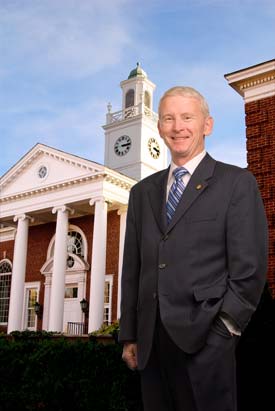
The 25th president came to Longwood University after serving as the chief academic officer at the United States Military Academy at West Point, his alma mater. He held the rank of brigadier general and for many years was an Army lawyer who wrote articles and gave presentations on military law, torture and terrorism. Among his accomplishments at Longwood are the creation of an academic strategic plan through a campuswide collaborative process, securing membership in the Big South Conference for the athletics program and creating an Office of Sponsored Programs and Research to seek funding for the faculty’s scholarly activities.
Finnegan, known affectionately as "P-Finn" by students, resigned for health reasons.
-
Dr. Patricia Picard Cormier
1996-2010
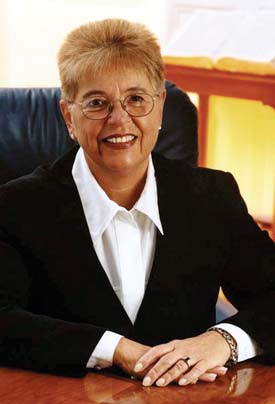
Longwood’s 24th president presided over a period of unprecedented growth in, and significant improvements to, the physical campus, including Brock Commons, Chichester Science Center, Pierson Hall (Health and Fitness Center), and the Center for Communication Studies and Theatre. Cormier, who grew up in Stratford and nearby Westport, Conn., came to Longwood after serving as vice president for academic affairs and professor of educational leadership at Winthrop University.
Under her presidency, Longwood College became Longwood University, the university concluded its first comprehensive campaign one year ahead of schedule and ahead of its goal with more than $33 million in contributions. In addition, athletics moved from Division II to Division I; enrollment grew from 3,325 to more than 4,700; an MBA program, a nursing program and other new degree programs were introduced; an internship or some form of experiential learning was added as a requirement of all students; the Cormier Honors College for Citizen Scholars was established; and Longwood for 11 consecutive years was ranked among the best in the U.S. News and World Report "America’s Best Colleges" list. She helped guide the recovery after the Great Fire of 2001. Cormier was known for her personal warmth, boundless energy and infectious enthusiasm.
-
Dr. William F. Dorrill
1988-96
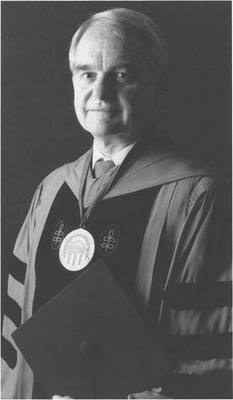
The 23rd president, William F. Dorrill, was a political scientist whose specialty was contemporary China and East Asia. A native of Waco, Texas, he came to Longwood after serving as provost at the University of Louisville. He was instrumental in increasing Longwood’s international student population and establishing study-abroad opportunities for students and faculty with numerous educational institutions around the world. He has consulted with many Chinese universities and, before coming to Longwood, made four lecture tours of China.
Under his presidency, SAT scores rose, undergraduate admissions increased by 12 percent and graduate admissions by 97 percent, three new buildings opened and two were renovated, and student aid increased from about $4 million to more than $12 million, all of which occurred while state funding for educational and general operations, the bulk of Longwood’s budget, fell from 67 percent to less than 54 percent.
-
Dr. George Robert Healy
1987-88
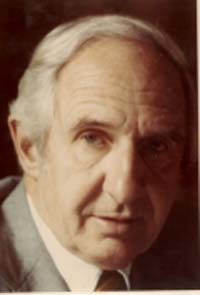
The 22nd president came to Longwood from the College of William & Mary, where he taught history and served at various times as vice president for academic affairs, provost and acting president. As a historian, the native of Milwaukee, Wis., specialized in the intellectual history of 18th-century France and translated Montesquieu’s Persian Letters.
Respected for his humble, down-to-earth ways, Healy rode into Farmville on a Greyhound bus to begin his presidency. Another time, he delighted students by singing a Maurice Chevalier tune at a student talent show. After leaving Longwood, he served as acting president at Christopher Newport College (now University) and executive vice president at Old Dominion University.
-
Dr. Janet Daly Greenwood
1981-87

Janet Greenwood, the 21st president, was the first female president in Longwood’s time as a public institution and at the time was one of only 22 female presidents of public colleges nationwide. The Goldsboro, N.C., native came to Longwood from the University of Cincinnati, where she was vice provost for student affairs. During her presidency, she organized the academic units into three schools (now colleges) and established an arts and sciences honors program, a new program in special education, new majors in anthropology and philosophy, and pre-professional programs.
Dr. Greenwood left Longwood to become president of the University of Bridgeport (1987-92), and, in 2004, she founded Greenwood & Associates, an executive search, consulting and training firm. She is a member of Kappa Delta, the oldest of the four national sororities founded at Longwood.
-
Dr. Henry Irving Willett Jr.
1967-81

Henry Willett, the 20th president, oversaw Longwood’s transformation from an all-female school primarily for teachers into a fully coeducational and comprehensive institution. A Virginia native who grew up in several communities including Staunton and Richmond, Willett started at Longwood at age 36 (only Joseph Jarman started at a younger age) after serving in public school divisions in the Tidewater area for 12 years, including as assistant superintendent of instruction for the Chesapeake schools.
In 1969, while much of the country was erupting in angry student protests, Willett was feted in a surprise rally and pro-Willett demonstration on Wheeler Mall, which the Richmond Times-Dispatch called "a kind of protest in reverse." On what was called the first official Henry Willett Day and attended by 1,000 of the 1,700 students, blue and white buttons proclaimed "This is Willett Country." Willett was an avid tennis player who played daily at Longwood.
-
Dr. James Heflin Newman
1965-67
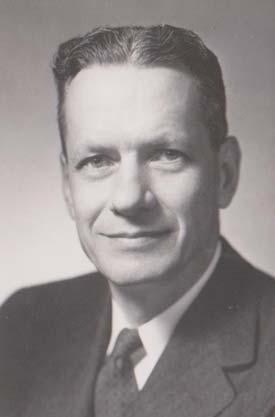
The 19th president was a native of Alabama who came to Longwood after a career spent mostly at the University of Alabama, his alma mater, where he held several administrative positions, including executive vice president and interim president.
-
Dr. Francis Greenfield Lankford Jr.
1955-65
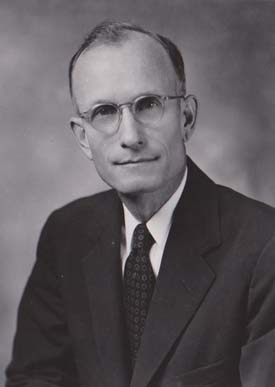
Francis G. Lankford, a Lancaster County native who was the 18th president, was the author or co-author of 25 mathematics and algebra textbooks, including a pioneering work in consumer mathematics. He came to Longwood College from the University of Virginia, where he taught mathematics for more than 20 years and was the first director of U.Va.’s Division of Educational Research, later called the Office of Institutional Analysis, which he organized. In 1962-63, under Ford Foundation sponsorship, he led a group of educational advisers to Pakistan on a 15-month mission to help that government develop a national educational system.
During Dr Lankford's tenure, enrollment increased from 791 to 1,459 and the faculty from 62 to 100; the Longwood Foundation and the Board of Visitors were created; the annual operating budget more than doubled; and new construction, renovations and other capital expenditures totaled $5 million.
-
Dr. Dabney Stuart Lancaster
1946-55
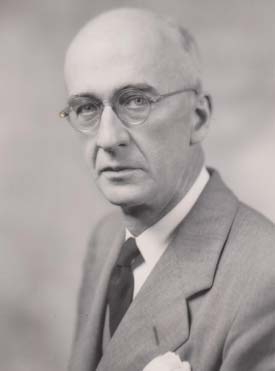
A Richmond native who was the 17th president, Dabney S. Lancaster came to Longwood after serving as state superintendent of public instruction from 1941-46. Previously, he had taught agriculture at Virginia Tech and had been dean of men at the University of Alabama. Under his leadership at the institution, the name was changed from State Teachers College to Longwood College, a graduate program was added and three major buildings—Stevens, Jarman and Tabb—were built.
Dr. Lancaster left Longwood to become chair of the State Council of Higher Education for Virginia. Dabney S. Lancaster Community College, in Clifton Forge, is named in his honor.
-
Dr. Joseph Leonard Jarman
1902-46
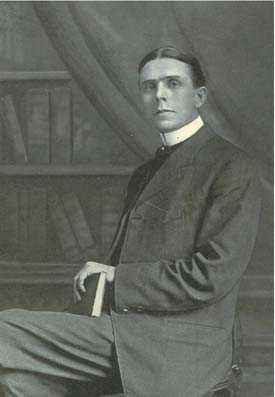
Joseph L. Jarman, the 16th president, was not only Longwood’s longest-serving but also its most beloved president. He is remembered for the red rose he wore in his lapel, for his enthusiastic singing during daily chapel services and for his unwavering kindness. His ghost is said to inhabit a balcony seat in the campus building named in his honor. A Charlottesville native, he came to Longwood at age 34 after chairing the natural sciences department at Emory and Henry College, where he married the daughter of a former Emory and Henry president.
During his presidency, Longwood became a four-year accredited college offering B.A. and B.S. degrees in the liberal arts and education, the number of faculty members increased from 12 to 66 and the student body from 300 to more than 1,000. Both the student government and the honor code were established, and an honors course—the first in a Virginia state college—was inaugurated. It was announced in 1930 that Jarman was leaving to become state superintendent of public instruction, but an outpouring of support caused him to change his mind and remain at the helm of the State Female Normal School.
-
Dr. Robert Frazer
1897-1902
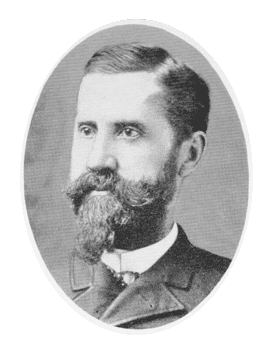
Robert Frazer, the 15th president, was an Orange County native who served during the Civil War in the famed Stonewall Jackson Brigade and was wounded five times. Before coming to Longwood, he had been president of the Mississippi Industrial Institute and College (now the Mississippi University for Women), and also president of the Judson Female Institute (now Judson College) in Alabama.
During his Longwood tenure, Chi was founded and the school fielded its first basketball team. In addition the first full-time librarian was hired, and "Junior Year," a third year of study before the professional year, was established.
-
Dr. John Atkinson Cunningham
1887-97
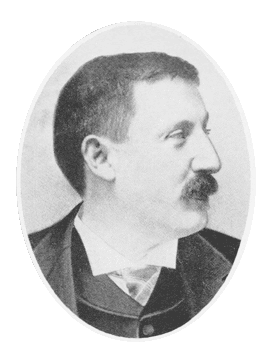
A Richmond native and Civil War veteran, John A. Cunningham was the 14th president and second of the State Female Normal School. He came to Longwood after teaching Latin at Western Kentucky Military Academy and serving as principal of Madison School in Richmond. His mother was a member of the prestigious Johnston family, which owned Longwood Estate in Farmville, from which Longwood would later derive its name.
During Cunningham’s tenure, the faculty increased from nine to 14 and the student body from 93 to 250, and the two-year course of study was increased to three years. While still president, he died at age 51 of meningitis shortly after the 1897-98 school year began.
-
Dr. William Henry Ruffner
1884-87

William H. Ruffner was the 13th president and the first after Longwood became a state institution, named the State Female Normal School, in 1884. A Lexington native, Ruffner was an educational reformer, clergyman and geologist. He served as Virginia’s first state superintendent from 1870-82.
When the General Assembly established State Female Normal School in 1884, it had a faculty of eight, including Ruffner, 111 students and a curriculum consisting of an elementary course and an advanced course, each of two years’ duration, which prepared teachers for the primary grades through the high-school level. "All that we had was a principal, an appropriation, a rough scheme and an old academy building," he later said of the opening. "Not a teacher, nor a book, nor a piece of furniture or apparatus, and more things to be done than any human mind could foresee."
-
Mary Elizabeth Carter
1882-84
A member of the prestigious Shirley Plantation Hill Carter family, Mary Elizabeth Carter—better known as "Fannie"—succeeded Paul Whitehead as the 12th president of Farmville College. Carter, a recent graduate of Greensboro College, was a Methodist minister’s daughter and an accomplished teacher. She served as principal of Farmville College until the institution underwent another change: becoming the State Female Normal School and a public institution.
-
Paul Whitehead
1873-82
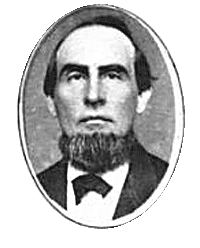
Whitehead, a Methodist minister, was the 11th president of Farmville Female College. Whitehead, a native of Nelson County, earned his Doctor of Divinity at Randolph-Macon College and began his career as a minister in 1853 in Lynchburg. A close friend of Stonewall Jackson, Whitehead was named president of Wesleyan Female College in Murfreesboro, N.C., in 1866 and remained in the post until 1873, when the school was sold. Whitehead brought a number of faculty members and officers from Murfreesboro to Farmville when he accepted the Farmville Female College post and began reviving the flagging school. While president of the college, he was made a trustee of Randolph-Macon College and a visitor of the University of Virginia.
Under Whitehead’s leadership, Farmville Female College began to grow again, this time quite rapidly. In 1874, enrollment had grown to 70 students and a 25 percent increase was noted the following year. An addition had been put on the original building and a stock company created to raise capital for the school. A new charter was granted on June 5, 1875, and the school renamed Farmville College. Enrollment, however, began to drop as tuition and fees began to rise. From a high of 103 students in 1876, enrollment had dipped to 65 by 1880. Board had risen to $170, with tuition ranging from $20 to $50, depending on the course of study. Whitehead resigned in 1882 to return to full-time church ministry.
-
James D. Crawley
1872-73
Rev. James D. Crawley was the 10th president. A trustee of Farmville Female College, Crawley was a Methodist minister who lived at Diamond Grove, a house his father-in-law built for him in Prospect in 1844. Crawley and his wife founded and built Prospect Methodist Church, where he served as lay pastor for many years.
The Richmond Christian Advocate, a weekly Methodist newspaper, described Crawley’s teaching as "patient, thorough, painstaking, and many hundreds of people owe their success in life to his faithfulness." Crawley, though, like his two immediate predecessors, lasted only a year as the president of the college. The college property was sold on Feb. 6, 1873, to Garnett and Martha Bickers, who acted as a holding agent.
-
Francis Marion Edwards
1871-72

Second in a string of one-year presidents, Francis M. Edwards, a native of King George County, was the ninth president at a time of upheaval in the South, when Farmville Female College’s future was in jeopardy. Edwards had been a teacher and minister in Lexington and Lynchburg before embarking on statewide travels as a minister, which he continued until he was appointed to the Farmville Station in 1870.
By the time Edward took office at Farmville Female College, board had increased to $75, while tuition ranged from $8-$23, depending on the subject matter. Like his predecessor, however, Edwards was replaced at the helm of the college after a single term. Still a popular regional minister, Edwards was made presiding elder of the Methodist Farmville District in 1872.
-
S.F. Nottingham
1869-70
Little is known of S.F. Nottingham, the eighth president. Nottingham took over as the eighth principal after Arnaud Preot’s departure in the midst of Reconstruction. Farmville Female College’s finances were suffering, as was the case with many small institutions in the South after the war. Nottingham lasted only a year at the helm and was replaced before the next term.
-
Arnaud Preot
1862-69
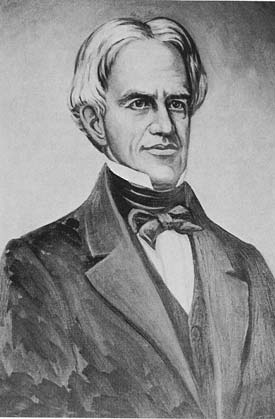
The second principal of Farmville Female College and the seventh overall president, Arnaud Preot, a native of Lille, France, took over for the recently departed George La Monte in the midst of the Civil War. He had previously taught at Walkhill Academy in Pennsylvania and was a professor of music and languages at Southworth College in Petersburg, Va. He moved to Buckingham County in the 1850s to teach music at the Female Collegiate Institute, which faltered at the beginning of the war. Preot took a job as a music and French teacher at Farmville Female College and was then named president.
Under Preot’s tenure, the faculty was enlarged and a three-year degree program for select students was instituted. Tuition and fees at the college had been raised by that time to $63 for music and language tuition, and $64 for board. By 1864-65, enrollment had increased to 87 students, in addition to a number of other scholars seeking certificates of proficiency. Preot resigned the presidency in 1869 to teach at Danville Female College. When that institution closed the next year, he accepted a position on the faculty of Roanoke Female College, eventually serving as principal there.
-
George La Monte
1859-62
Another New Yorker, George La Monte was the first principal of the newly renamed Farmville Female College and the sixth president overall. La Monte, just 25 when he took the helm of Farmville Female College, was a graduate from Union College in Schenectady, N.Y., and a devout Methodist. He was named the assistant principal of the Valley Institute in Winchester, Va., in 1858. Forward in his thinking, La Monte stated in 1858 that "woman is neither the inferior nor the superior of man. Each is the compeer of the other."
La Monte served at a tumultuous time both in the country’s history and personally. As the Civil War broke out in 1861, La Monte was influencing the college atmosphere to be increasingly devout. War hit the La Monte family personally, with a death in the family and the family home of La Monte’s wife, Rebecca Kern, destroyed in the Valley Campaign. La Monte opened the 1862-63 college session but joined the faculty of the new Danville Female Seminary in March 1863. After the war, La Monte returned with his family to New York and opened the firm George La Monte & Son, which, according to La Monte’s 1913 obituary in the New York Times, "succeeded to its business."
-
Benjamin Gould
1855-59
While little is known of Benjamin Gould, the fifth and last principal of Farmville Female Seminary Association, the academy’s curriculum and enrollment had grown to the point that incorporators of the seminary were ready to make the step forward to incorporate as a college. Farmville itself grew as a town during Gould’s term, prosperity increasing when High Bridge was opened just before Gould took office.
-
John Benjamin Tinsley
1850-55
John Benjamin Tinsley, fourth principal of Farmville Female Seminary Association, was appointed in 1850. He had previously served as principal of Powhatan Female Seminary. Forty-six years old and a native of Richmond, he and his wife, Eliza, had five children and moved to Farmville from Powhatan. In 1850, the seminary was home to 22 students, seven of whom also came from Powhatan.
-
Lorenzo Coburn
1846-50
Lorenzo Coburn was the third principal of Farmville Female Seminary Association. A native New Yorker, Coburn is remembered as much for his prominent nose as for his accomplishments during his four-year tenure. Coburn was also the third president of Franklin Academy, an institute established in 1831 in Franklin County, N.Y. In his later years, he lived in Kansas, New Jersey and South Dakota.
-
Rev. Lorenzo Lea
1843-46
The brother of Solomon Lea, Rev. Lorenzo Lea was the second principal of the Farmville Female Seminary Association. Lea had served the previous year as president of the Buckingham Female Collegiate Institute, the oldest female institute in the commonwealth. Lea, a graduate of the University of North Carolina, was a member of the Philanthropic Society and a Methodist minister. After serving as principal of the Farmville Female Academy, he served as president of a Memphis Conference Female Institute in Jackson, Tenn., which later became Lambuth University, now part of the University of Memphis. Lea also holds patents for leveling instruments for surveyors, granted in August 1860.
-
Solomon Lea
1839-43
The first principal of Farmville Female Seminary Association, Solomon Lea presided over the first year of classes at the new seminary building, which opened in July 1843. Construction of the square, three-story brick seminary building—the cornerstone of which was laid in 1839—took four years to complete and was finished May 26, 1842. Tuition fees for the five-month term began as $20 for piano, $15 for senior English, $12.50 for lower English and $5 for each foreign language. Board cost $8-$10.
In the autograph album of one student, Lea, who by then had stepped down as principal, contributed a short verse:
As I am getting old,
My poetry, love and
Album days, are over
With me.Solomon Lea June 13, 1845
